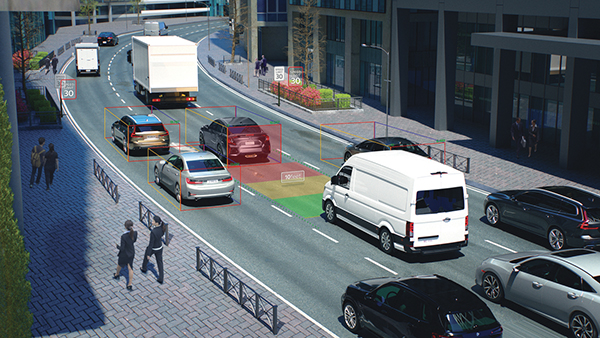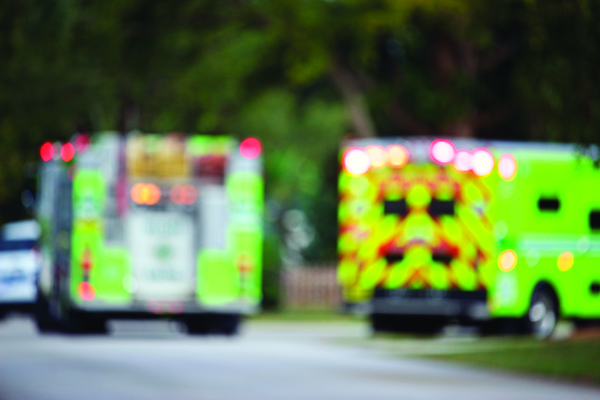During the period from 2009 to 2018 (the latest figures available), fatalities in collisions involving large trucks have been on an upward trajectory, rising from 3,147 to 4,136 according to the Insurance Institute for Highway Safety. Both the human and financial costs of these crashes demand that we act. Fortunately, technological developments give fleet managers a range of effective tools to develop the safety programs we need to make roads safer and the trucking industry stronger.
TELEMATICS
Telematics: You’ve likely heard the term before, but do you know where it got its name? Telematics is a combination of the words telecommunications and informatics and refers to the transmission of information over long distances. It is now almost exclusively used to refer to vehicle telematics—communicating vehicle information over long distances. The growth of telematics was the result of several breakthroughs.
Although telematics in and of itself is not a safety technology, it can help turn other technologies into more effective safety tools.
FMS
The main purpose of a fleet management system (FMS) is, as it says in the name, to help manage your fleet. These systems digitize much of the juggling work necessary to run a fleet. An FMS, which can work from a central server, coordinates vehicle and driver schedules, maintenance schedules and costs, fuel costs, among other functions. You can think of it as a database optimized for use with fleets.
At a very basic level, an FMS can play a role in fleet safety—making sure drivers are on proper schedules, which can cut down on drivers’ “wasted time” when they are waiting around not on the clock and not resting. In addition, maintenance scheduling and engine monitoring help prevent mid-trip equipment failures that can lead to dangerous situations. However, with the addition of telematics, these systems can make further contributions to fleet safety.
These telematics systems can identify speeding and use g-sensors to track when and where vehicles are braking, accelerating, and cornering harshly—all behaviors often associated with poor driving habits.Harsh braking can indicate tailgating, harsh cornering indicates either speeding or not adjusting to road conditions, and harsh accelerating indicates aggressive driving. Telematics can also pinpoint where these incidents occurred, which can provide important context; if a wide variety of drivers are cornering harshly at a particular location, maybe it’s the location and not the driver.
CONTEXT CLUES
Of course, there is the issue of context. On a blog post, Chris Hemedinger, manager of SAS Communities, once compared driver evaluations based on this type of data to judging someone’s driving while sitting in their car with your eyes closed, “with your eyes shut, you’re denied important information such as your location, traffic conditions, speed limits and traffic signals, and weather conditions. Sightless, your only source of data comes from your sense of motion as the vehicle accelerates, slows down, and turns.”
In order to get this context, you need to sit down with drivers and go over their routes in detail, discussing any out-of-the-ordinary incidents. These evaluations are important as not only do you get the context you need, drivers understand that they are monitored. Of course, there is a fine line between keeping employees attentive and an oppressive “Big Brother” atmosphere.
VER
Video Event Recorders (VER), popularly known as dashcams, are classified as “safety equipment” but how often do fleets use them as such? For many fleet managers they are simply devices to prove fault in case of collision, but they can, in fact, be an important part of a fleet safety program.
By pairing VER with a telematics device, fleets can isolate incidents of harsh braking, accelerating, and cornering and view the footage to get the context of the situation. This information can then be used as the basis for further driver coaching and training.
Another aspect of VER is the possibility of adding an in-cab camera to monitor drivers. This provides a powerful incentive for drivers to follow
the rules, as most of us do when we know we’re watched. It can also be further proof, in case of collision, that the driver was not engaging in dangerous behavior. Of course, many drivers feel these cameras are an intrusion into their privacy, a feeling many people would share if they were filmed all day at work.
CAS
Collision Avoidance Systems (CAS) monitor the road, scanning for potential collisions and warning drivers in time to either avoid or mitigate a collision. Given that the NHTSA has determined that nearly 80% of crashes involve driver inattention within three seconds of an event, these warnings can be a powerful tool in a fleet safety program.
A robust CAS should include:
- Headway monitoring to warn drivers if they are too close to the vehicle ahead.
- Forward collision warnings to warn drivers of an imminent collision with either a vehicle, pedestrian, or cyclists ahead.
- Lane departure warning to warn drivers if they leave their lane unintentionally.
In addition to helping drivers avoid collisions with these alerts, there is also evidence that CAS actually help train drivers while they’re on the job. It seems that drivers naturally try to avoid triggering warnings by driving more safely. A University of Missouri study showed after driving with collision avoidance systems, drivers showed a 43% drop in lane departure warnings, 71% drop in warnings for following too closely (headway monitoring), and a 57% drop in forward collision warnings.
As with VER, combining CAS with telematics can significantly boost its potential for safety training. Using this combination of CAS and telematics, fleet and safety managers can determine how often and where drivers trigger alerts.
While lacking the visual context provided by VER, CAS in many ways can provide a more comprehensive picture of driver behavior. For instance, CAS can track instances of tailgating, lane drift, and speeding, even if the incident does not lead to harsh braking, accelerating, or cornering. Fleets can also use this alert information to map out potentially dangerous areas, for example an area where drivers trigger numerous pedestrian collision warnings may indicate a lot of foot traffic; possibly a place for fleets to avoid.
TECHNOLOGY FOR SAFETY
Fleets are currently challenged by increasing fatalities in crashes involving trucks. Fleets themselves need to evolve more effective safety programs to stem this tide. For maximum effectiveness, these programs must start taking advantage of the untapped potential provided by the cutting-edge technologies available to them today.
FOR MORE INFORMATION
Find out more about fleet safety solutions, visit www.mobileye.com/us.




